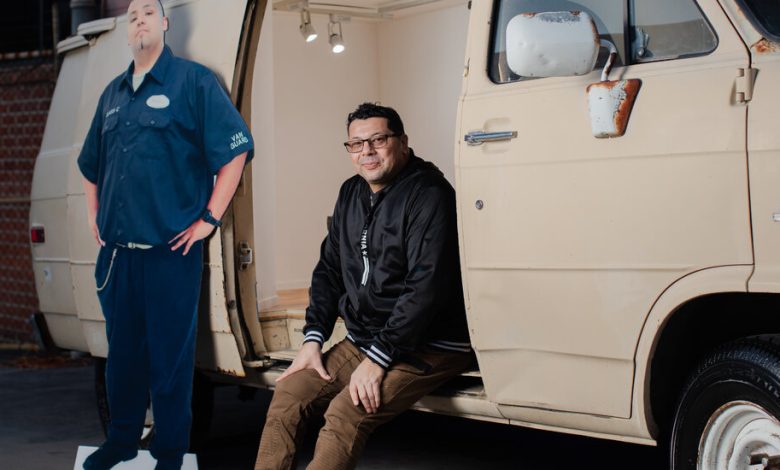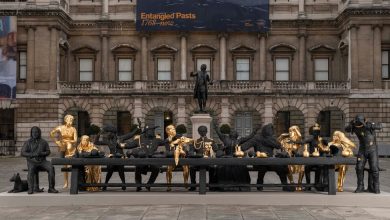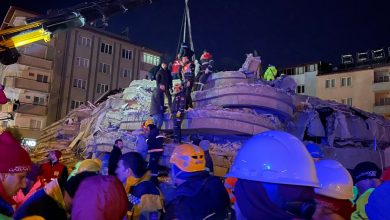A Vehicle for Social Justice, Bound for the Frieze Art Fair

LOS ANGELES — This beige 1985 Chevy cargo van has been around the block. When the artist Ruben Ochoa was young, his parents used it for selling tortillas on a route north of San Diego. As a graduate student in the early ’00s, he used it to commute from Los Angeles to Irvine. And during that time he also transformed it into a fly-by-night, no-rent art gallery, inviting other artists and curators to take it over, hanging paintings inside, plastering the back with bumper stickers or creating a halfpipe on the roof.
Now, for the first time since 2005, Ochoa is opening the doors of his storied and rather rusty van to the public again, parking it on the tarmac of the Santa Monica airport for the run of Frieze Los Angeles there (Feb. 16-19). Its engine is shot, so this time the van, known as “Class: C” (after the standard type of driver’s license needed to operate it), will be towed into place.
Another change: The van will showcase Ochoa’s own work, bronze sculptures he recently made of stacks of tortillas — “monuments to the history of the van and to my mom, who pioneered our tortilla delivery route,” he said in an interview. Commissioned through a city grant program, the tortillas resemble giant coins, touching on his idea that they represent his family’s currency.
Ochoa’s Frieze exhibit, part of a public program organized by the Art Production Fund, will also feature four tamale carts wrapped with custom graphics of his design. Expect patterns of repeating rainbow umbrellas to highlight his continuing support for Los Angeles street vendors, predominantly immigrants, in their struggles against police harassment, hate crimes and a bureaucratic permitting process. (Ochoa partnered with Revolution Carts because their “tamaleros,” or tamales makers, have permits from Los Angeles County.) Two of the carts will be put to actual use, with vendors selling tamales to hungry fairgoers.
“Class: C” operates on different levels: part everyday vehicle, part mobile food market, and a roving, artist-run, socially engaged exhibition space.
“My parents created a Mexican market on wheels, so I was emulating that practice,” the artist said. “The idea was to show artists of color or marginalized artists and bring their work to the community.”
You can also see the van — tricked out with gallery-style lighting, a faux-wood floor and a small office setup in front — as an artwork by Ochoa, who is best known for his gritty sculptures made from construction materials, like concrete and rebar.
“He was using the van as a sculptural object, and when he invited us to use it, we thought of it as a canvas,” said Rita Gonzalez, the head of contemporary art at the Los Angeles County Museum of Art. Two years ago, she worked with Ochoa on an augmented reality project for the museum, featuring a fantasia of flying street vendors.
So what’s the next stop for the Frieze installation? Ochoa said that the project’s sponsor, Maestro Dobel tequila, purchased one of the carts to give to a street vendor after the fair, and that he hoped other donors would step up for the rest. He is also decorating a new cart to be displayed inside the MexiCali Biennial at the Cheech in Riverside this month.
As for the van, he said he expected it would most likely go back into storage in his parents’ driveway in Oceanside. “But it would be awesome for it to find a home that isn’t my parents’ house,” he said. “Maybe LACMA or the Smithsonian.”





